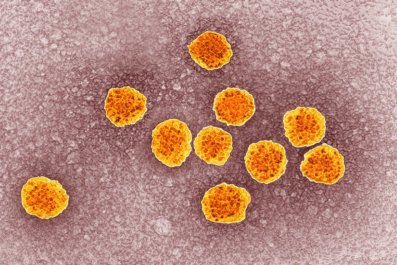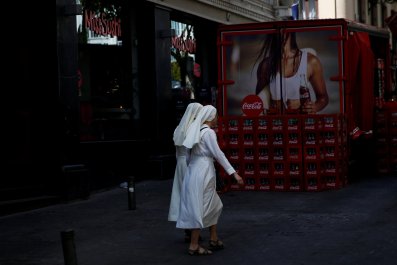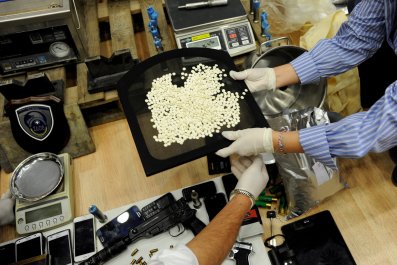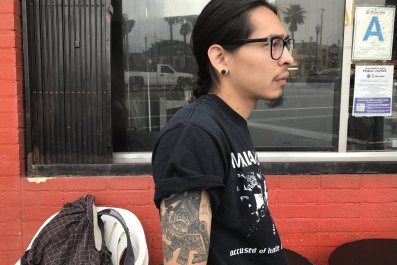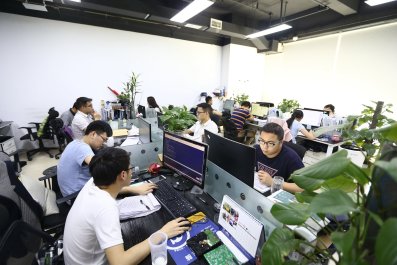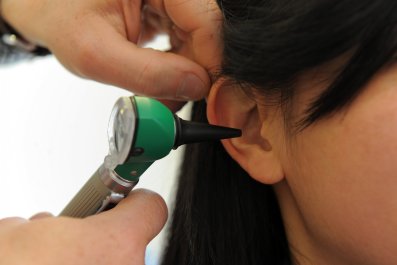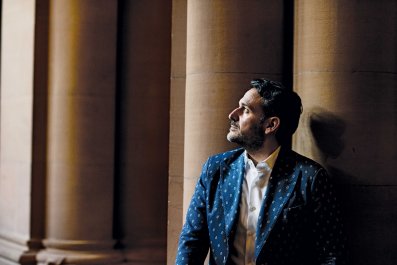In a diminutive shack in Eugene, Oregon, in a neighborhood that until recently was a better place to find meth than a decent meal, Taro Kobayashi is carving into the pinkest block of tuna I've ever seen.
Kobayashi is the owner and head chef of a restaurant called Mamé. He seats no more than 19 people at once, and if you didn't make a reservation, you might not squeeze in until after 10 p.m. The cramp and the call ahead are worth it, though, because Kobayashi buys fish only if he knows precisely where it came from—the fisherman, the boat and the body of water. He doesn't buy fish unless it's in season, no matter how much his customers might ask for it. He can tell you all about why it's better to wait five days to serve tuna (that gives the flesh time to recover from the stress of being caught) or how the yellow tint on the seared Nantucket scallops indicates they're female. Knowing his fish is "really important," Kobayashi says. When asked about the mystery meat served at most sushi bars across the world, he says, "You guys deserve better."
You might assume his obsessive focus on quality ingredients would be common in a cuisine that features raw fish, but it isn't. Even after a glut of media reports last year on the publication of an alarming book that exposed a rampant practice of fake fish being sold as real fish, complacent consumers are still being duped. In November, the nonprofit seafood sustainability advocate Oceana released a report updating its review of seafood fraud globally. The news was mostly bad. On average, the percentage of seafood mislabeled has hovered around 30 percent for the past decade, according to an analysis of 51 peer-reviewed studies published since 2005. "The snapper is 87 percent wrong?" says Kobayashi, referring to a stat from an earlier version of Oceana's report. "That's insane. We should be outraged, as a nation."
The industry is changing but slowly. Sushi heads are newly alert, and the industry is scrambling to meet their demand for honestly sourced fish.
One of the nation's few hubs for traceable seafood is Oregon, especially Portland. At Portland's Bamboo Sushi, every item on the menu is tagged with a different-colored fish icon, signifying the range of sustainability and traceability offered. Bamboo is one of only a handful of sushi spots nationwide that hips its patrons to what they're eating and where it came from. The reason that's so rare, says founder Kristofor Lofgren, is because stocking quality fish is tough. "Most sushi restaurants are mom-and-pop," Lofgren says. "They need fish. They call a local distributor. They ask, 'What do you have?' and the distributor asks, 'What can you spend?' They end up with an acceptable medium range."
That medium range wasn't acceptable for Lofgren; he wanted all of his fish to be high quality and reasonably priced, so he negotiated long-term deals with the best boats he could find. Building his own supply chain took 18 months, but in doing so he overcame the biggest obstacle to cleaning up seafood fraud: a massive and massively complex supply chain. Ninety-two percent of the seafood consumed in America is imported, says Phil Werdal, CEO of Seattle-based Trace Register, which provides a food traceability system for clients in 40 countries. Much of what's landed at ports around the world comes from tens of thousands of individual fishermen. There's no tracking system for all these trollers and trawlers. As a catch goes from deck to dock to processing plant to refrigerated truck, it could at any point have its label switched. Buyers with a little leverage can get close enough to the dock to ensure they get what they're paying for, but small sushi restaurants can't.
In Italy, 82 percent of the samples Oceana took of perch, grouper and swordfish were mislabeled, mostly at grocery stores and restaurants. Asian catfish, a white-fleshed fish, serves as an impostor for 18 different kinds of more expensive fish, from perch to grouper. A study from UCLA and Loyola Marymount University found that nearly half of all sushi in Los Angeles is mislabeled, based on samples of 26 restaurants between 2012 and 2015.
The seafood industry is slowly responding to concerns about fraud. In 2016, President Barack Obama started a Seafood Import Monitoring Program, which (unless the new administration quashes it) takes effect January 2018. The program beefs up requirements for documenting seafood brought into the U.S., which could one day lead to more hands-on inspections to ensure what's in the box matches the label. The program doesn't cover enough kinds of fish, says Oceana's Beth Lowell, but it's "better than nothing."
In January, the National Fisheries Institute sued the federal government to block the monitoring program. Institute spokesman Gavin Gibbons tells Newsweek there are regulations perfectly equipped to police fake seafood. They just need to be enforced. In 2016, investigators with the Santa Clara County District Attorney's Office caught a restaurant in Northern California passing off farmed tilapia as petrale sole. The penalty: a $120,000 fine. In 2015, the city attorney in San Diego fined eight sushi restaurants for deceiving customers.
Absent enforcement, providing high-quality fish seems to work for restaurants. In 2008, the year Bamboo Sushi opened its first restaurant in Portland, it served 30,000 patrons. Eight years later, that number was 360,000. Lofgren's customers don't ask as much about where the fish comes from as they did a few years ago, he says, but that might be because they now trust his restaurants. As for the mom-and-pops, "they still don't care," he says. What they care about is "are the customers coming in or not?"
The volume of catch that's certified by the Marine Stewardship Council has risen by 6 percent since 2014, while the number of processors, restaurants and caterers who participate in the program grew from 2,879 to 3,334. Which is to say there's a reason Mamé is packed most nights. "I want people's kids to have this tuna," Kobayashi says, pointing to a verdant filet of Pacific bigeye, "caught right between us and Hawaii. It's my job to know what's the best."




